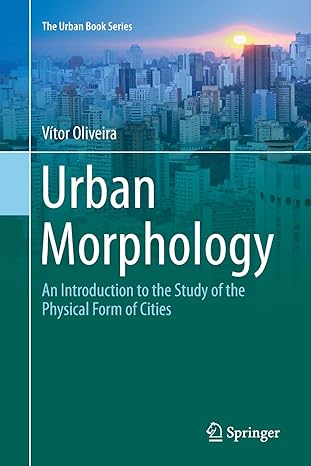Exercise 6.1Morphological Regions This exercise addresses one of the most important concepts of the historicogeographical approachthe morphological
Question:
Exercise 6.1—Morphological Regions This exercise addresses one of the most important concepts of the historicogeographical approach—the morphological region, as an area that has a unit in respect of its form that distinguishes it from surrounding areas (presented in the sub-section ‘The Ideas of M.R.G Conzen’). The first step of the exercise is the definition of the case study area. The student should define a circle around his home. A radius of 1,000 m is suggested. Yet, the size of the study area should be adjusted to the complexity and variety of the urban landscape. The second step is the identification of first-order regions, mainly determined by the town plan. As such, each region should have a singular pattern of combination of streets, plots, and buildings. After producing a map of first-order regions, the student should select one of these regions for further development. Within the selected first-order region, the student should continue to explore the existence of morphological differences. These differences should be mainly based on the town plan and building fabric. The third step is the presentation of results, including: the two maps of regions (first-order regions and second-order regions); photographs illustrating each map (one for each region); and one table, describing for each first-order regions and second-order regions, the main physical characteristics (see the example of Table 6.4). The student should prepare a brief powerpoint to be presented at classes (around 10 minutes for each presentation).
Step by Step Answer:

Urban Morphology An Introduction To The Study Of The Physical Form Of Cities
ISBN: 287081
2nd Edition
Authors: Vitor Oliveira






